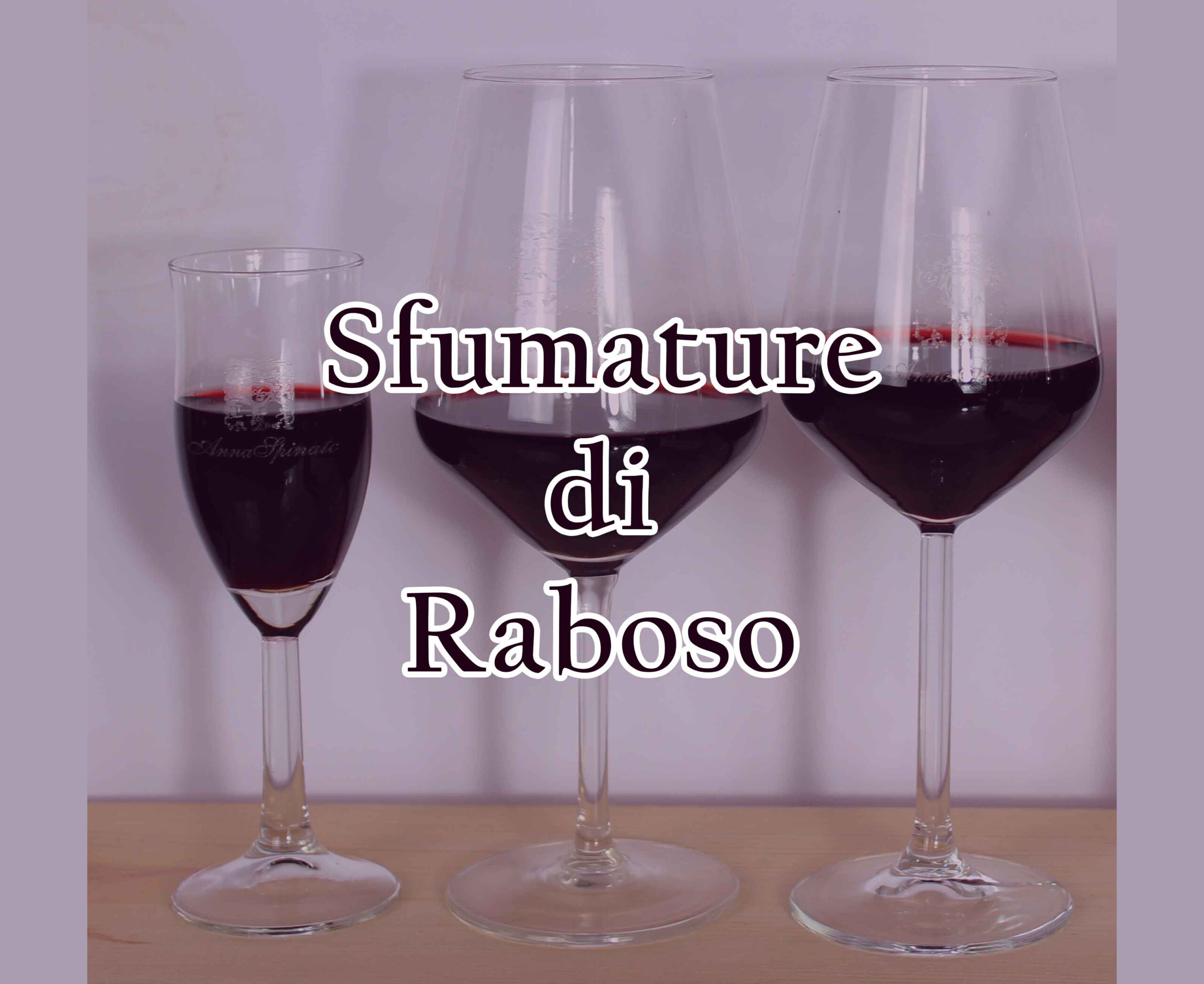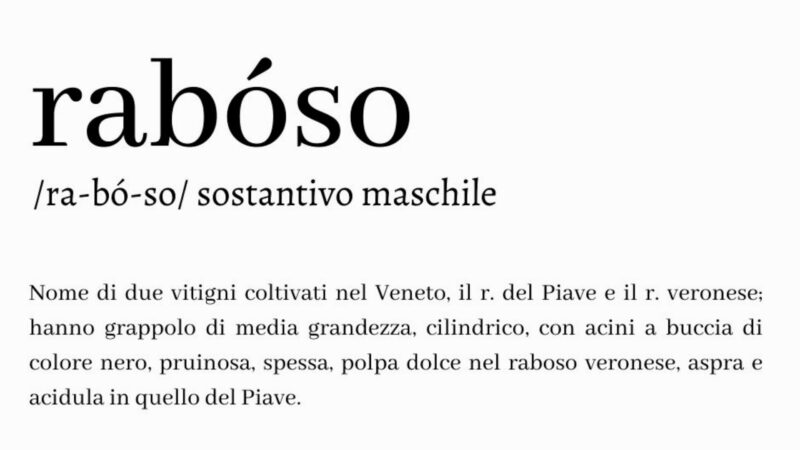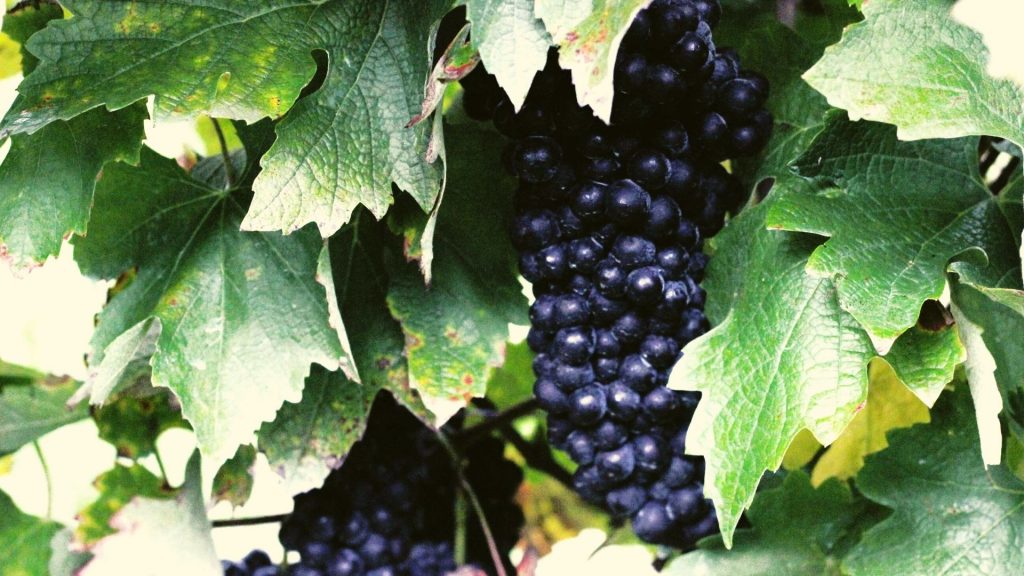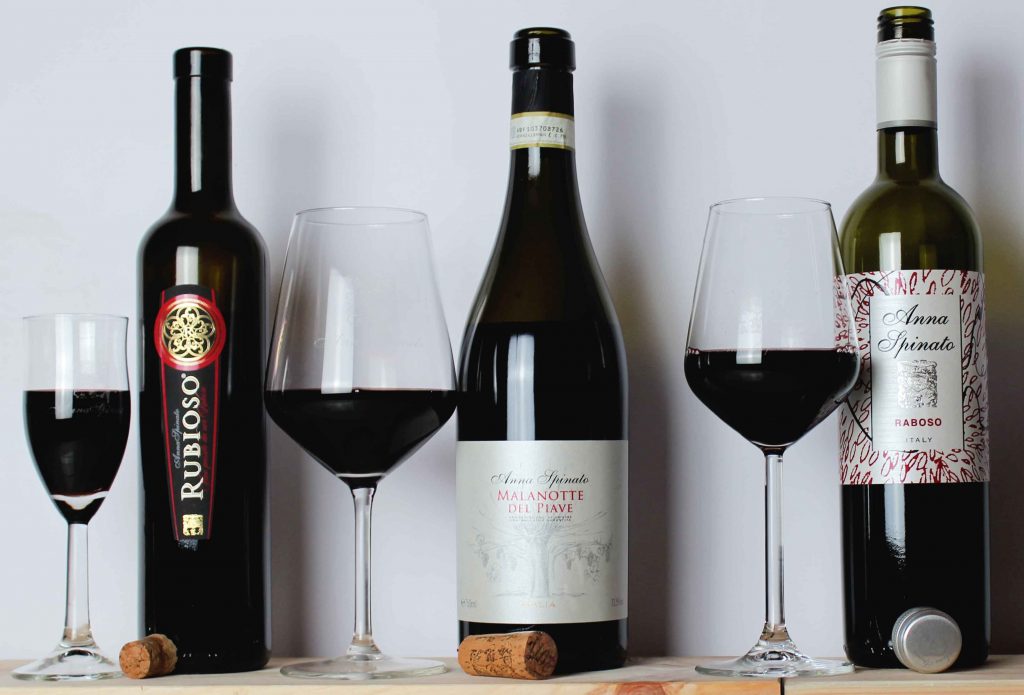
Raboso Piave: il vitigno storico di Anna Spinato
La storia
Il Raboso è un antico vitigno autoctono a bacca nera che è profondamente radicato nella storia del Veneto. Già nel 78 d.C. Plinio il Vecchio, nella sua Naturlias Historia, descrive l’uva raboso come “picina, ominum nigerrima”, cioè la più nera di tutte. Più tardi, nella Repubblica Serenissima di Venezia, il raboso diventa uno dei vini più commercializzati ed apprezzati, tanto da aggiudicarsi il nome di “vin da viajo” cioè vino ideale per affrontare lunghi viaggi verso le terre lontane, sempre ben protetto dalla ricca trama dei suoi tannini e dalla spiccata freschezza.

Lo nomina anche Giacomo Agostinetti, scrittore e fattore di Cimadolmo (TV), nel 1678 in Cento e dieci ricordi che formano il buon fattor di villa. Si tratta di una guida di buona coltivazione di frumenti, asparagi e molto altro, che fornisce anche importanti informazioni su come fare il vino bianco, vino dolce e vino nero. Proprio in questa sezione troviamo diverse righe dedicate al raboso. In particolare Agostinetti spiega che si tratta di uva nera destinata al mercato veneziano. La definisce un’uva di natura forte dal colore neressimo, che, lasciata scaldare, sviluppa gusto di marasca. Afferma che è molto apprezzata dai mercanti veneziani, soprattutto per il colore e come vino da taglio, perché è difficile trovare in altri Paesi un’uva così nera.
Vite, uva e vino

Nelle terre del Piave, il Raboso era profondamente legato al sistema di allevamento a Bellussera, un sistema di allevamento in cui le viti di raboso erano maritate agli alberi del gelso, sostegno naturale perfetto capace di ombreggiare i filari.
La vite di raboso germoglia presto ma l’uva viene vendemmiata tardi, tra metà ottobre ed inizio novembre. Gli acini presentano una buccia spessa, un bel colore nero e sono fittamente racchiusi in lunghi grappoli, capaci di generare un vino dal colore intenso, con profumi di marasca e frutti rossi, avvolgente ed equilibrato da fresca acidità. Piacevolissimo in gioventù, si esalta nei lunghi affinamenti in legno e bottiglia ed è perfetto per regalare ottimi passiti.
Il raboso di Anna Spinato

Oggi viene prodotto da Anna Spinato in tre intriganti versioni: Raboso Piave IGT, Malanotte del Piave DOCG, Raboso Passito.
Raboso Piave IGT
100% Raboso. Colore rosso rubino impenetrabile che tende al porpora sui bordi del calice. Al naso spicca la ciliegia che si alterna a note di sottobosco ed accenni speziati. Al sorso affascina per la freschezza e la trama dei tannini che esaltano l’abbinamento ai piatti di carne.
Malanotte del Piave DOCG
100% Raboso, di cui il 20% passito. Affinamento di 24 mesi in botti di rovere.
Al calice si presenta denso, di colore rosso rubino intenso con riflessi granati. All’olfatto note di visciola sotto spirito accompagnano accenni balsamici di eucalipto, poi emergono le note terziarie di tostatura che ricordano il caffè, il cacao e le spezie fragranti. Il suo sorso è rotondo, avvolgente e perfettamente coerente con le note riscontrate al naso. Vino perfetto con piatti di selvaggina che si racconta benissimo sorseggiandolo durante la lettura di un buon libro.
Raboso passito – Rubioso
100% Raboso passito.
All’olfatto sprigiona dolci ricordi di visciole in confettura perfettamente equilibrati da tracce tostate che rimandano al caffè ed al cacao. Continua con sbuffi balsamici ed intriganti note di tabacco da pipa che anticipano un sorso ricco, morbido ed avvolgente. La nota zuccherina è equilibrata dalla freschezza e dal tannino, tipici del raboso. Perfetto da gustare in buona compagnia davanti al caminetto, accompagna benissimo i formaggi erborinati e si esalta in abbinamento con dolci al cioccolato e frutti rossi.


